
Are you looking for a gift that combines romance with genuine relaxation? A couples massage as a gift is more than an ordinary present—it is
Kobido massage is one of the most effective methods for naturally relieving the symptoms of teeth clenching and grinding. Bruxism affects a growing number of people, especially those exposed to chronic stress and emotional tension. The problem isn’t just teeth grinding at night, but also the accompanying headaches, facial muscle tension, and discomfort in the temporomandibular joint area. Facial massage for bruxism works comprehensively, relaxing tense muscles and improving blood circulation in the facial area. Regular massage can significantly reduce the intensity of symptoms, and in many cases, eliminate them completely. The Japanese Kobido technique, used in professional salons, combines traditional massage with modern therapeutic methods. Thanks to precise movements and the appropriate pressure on specific points, the massage affects not only the superficial layers of the skin but also the deeper muscle structures. The effectiveness of this method is confirmed by the growing number of people who have overcome some of the problems associated with bruxism thanks to regular massage. What is bruxism and how does it affect facial muscles?
Bruxism is a medical term describing the involuntary clenching or grinding of teeth, which most often occurs during sleep but can also occur during the day. Various factors contribute to this phenomenon, including stress, improper chewing habits, incorrect tongue positioning, and nervous system disorders. The masticatory muscles, which are among the strongest in the human body, work at an intensity significantly higher than normal during bruxism, leading to chronic tension not only in the jaw but also in the muscles of the face, neck, and nape. Prolonged tension causes the formation of trigger points, which are a source of pain radiating to various areas of the head. Massage for trismus can effectively break this vicious cycle, helping the muscles relax and return to their natural state. People suffering from bruxism often experience morning stiffness in the facial area, a direct result of nocturnal activity of the masticatory muscles. Regular massage helps not only alleviate existing symptoms but also prevent them from worsening.
The Kobido massage technique for bruxism stands out from other methods with its precision and comprehensive approach to facial muscle therapy. Originating in Japan, Kobido massage focuses on stimulating specific acupressure points that directly affect the tone of the masticatory muscles. During the treatment, the therapist uses a variety of techniques, from gentle stroking movements to intense kneading of deeper muscle layers. A key element of this method’s effectiveness is its effect on the nervous system, which is responsible for regulating muscle tone. Facial massage for bruxism performed using the Kobido technique not only relaxes tense muscles but also improves their blood supply and nourishment. Increased blood flow supplies muscle cells with essential nutrients while simultaneously removing metabolic waste products that can cause pain and discomfort. Regular Kobido massage also stimulates the production of endorphins – the body’s natural painkillers. This allows patients to experience not only physical relief but also improved mental well-being, which is crucial in the treatment of bruxism, which is often associated with stress.
In a professional practice, bruxism massage involves the use of several specialized techniques tailored to the patient’s individual needs. The basic method is a pressure point massage, which focuses on precisely defined areas within the temporal, jaw, and neck muscles. The therapist applies controlled pressure to these points, leading to the release of accumulated tension and improved tissue elasticity. Another important technique is circular massage, which uses smooth movements across the entire face, stimulating lymphatic circulation and accelerating the removal of toxins from the body.
Kobido massage for bruxism also utilizes muscle stretching techniques to help restore muscle length and elasticity. During the treatment, gentle manipulation of the temporomandibular joint (TMJ) is also used, which can significantly improve mobility and reduce discomfort. All these techniques are performed in a specific sequence and with appropriate intensity, ensuring maximum effectiveness. Experienced therapists can adjust the pressure and type of techniques used to the patient’s current level of muscle tension and pain tolerance.
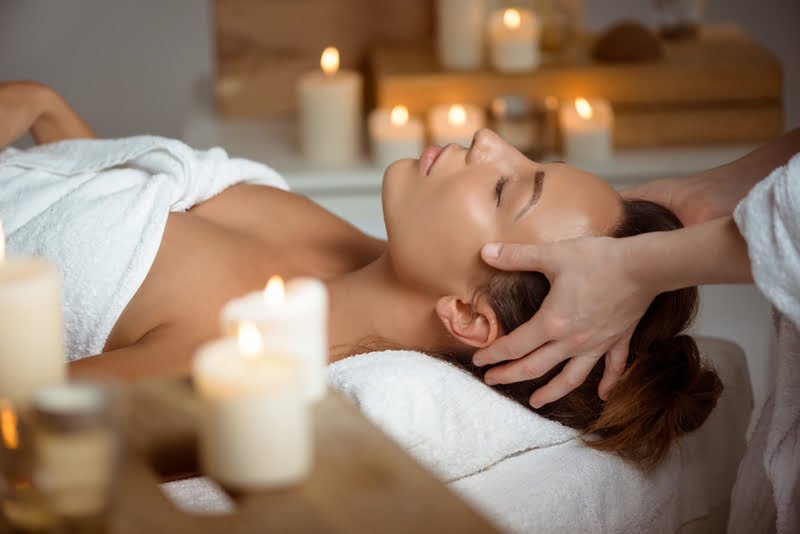
Regular use of facial massage for bruxism offers numerous benefits that go beyond simply relieving the symptoms of trismus. The most important is a significant reduction in the frequency and intensity of nocturnal teeth grinding episodes, which translates into better sleep quality for both the patient and their partner. Regular massage sessions lead to lasting relaxation of the facial muscles, eliminating morning headaches and stiffness in the jaw area. Furthermore, massage for trismus improves the mobility of the temporomandibular joint, making everyday activities such as chewing, speaking, and yawning easier. Regular users of Kobido massage often also notice an improvement in their facial appearance – the muscles become more relaxed, giving the face a more youthful appearance. The therapy also has a positive impact on the patient’s mental state, helping to reduce stress and emotional tension, which are often the primary causes of bruxism. Another important aspect is the educational nature of the therapy – during sessions, patients learn self-massage techniques that they can use at home if symptoms worsen.
reduced frequency of nocturnal teeth grinding episodes,
elimination of morning headaches and muscle tension,
improved mobility of the temporomandibular joint,
reduction of stress and emotional tension,
improved sleep quality,
learning self-massage techniques for use at home.
A professional Kobido massage is a comprehensive therapy, typically lasting approximately 70 minutes, during which the patient experiences deep relaxation and relief from the symptoms of bruxism. The session begins with a thorough interview, during which the therapist assesses the severity of symptoms and identifies areas of greatest muscle tension. Then, in a comfortable setting, the patient is prepared for the treatment, which includes facial cleansing and the application of appropriate oils to facilitate the massage. Performed by an experienced therapist, the bruxism massage is characterized by precise movements and gradually increasing intensity, allowing the muscles to slowly relax. During the treatment, the therapist monitors the patient’s response and adapts the technique to their individual needs and comfort. Particular attention is paid to the massage of the temples, jawline, and neck muscles, which are most often tense in bruxism sufferers. After the procedure, the therapist provides the patient with instructions on bruxism prevention and independent work at home, which significantly increases the therapeutic effects.

Lumira Spa is a place where relaxation takes on a unique dimension. Experienced therapists from Asia offer signature rituals and massages inspired by Thai and Balinese traditions. Each of them honed their skills at prestigious schools in the Philippines and under the guidance of masters, combining their knowledge with over a decade of practice. Guests can enjoy massages, scrubs, and baths that nurture the body, mind, and spirit. The spa provides a comfortable and soothing atmosphere for both individual and paired experiences.

Are you looking for a gift that combines romance with genuine relaxation? A couples massage as a gift is more than an ordinary present—it is

Pregnancy is a time when a woman’s body undergoes significant changes – the spine is under increased strain, legs may swell, and muscles often become
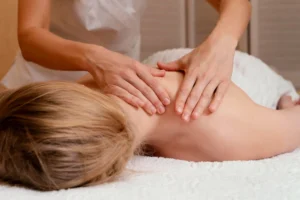
Therapeutic massage is one of the oldest therapeutic methods, which has evolved over the centuries, becoming today an integral part of physiotherapy and rehabilitation. This
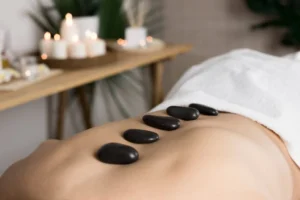
Hot stone massage is one of the oldest relaxation techniques, combining the power of touch with the natural warmth of lava stones. This unique form
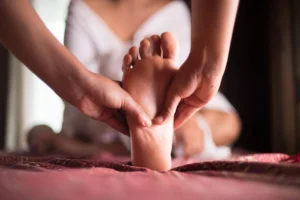
Regular care for health and well-being increasingly includes natural methods of supporting the body. One such practice is reflexology, a special form of bodywork that
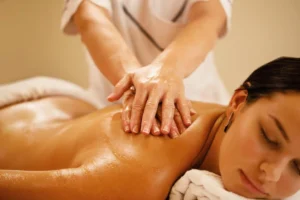
Balinese Massage – Origins, Philosophy, and Benefits Balinese massage is one of the most recognizable relaxation techniques, originating from traditional Indonesian medicine. This unique therapeutic